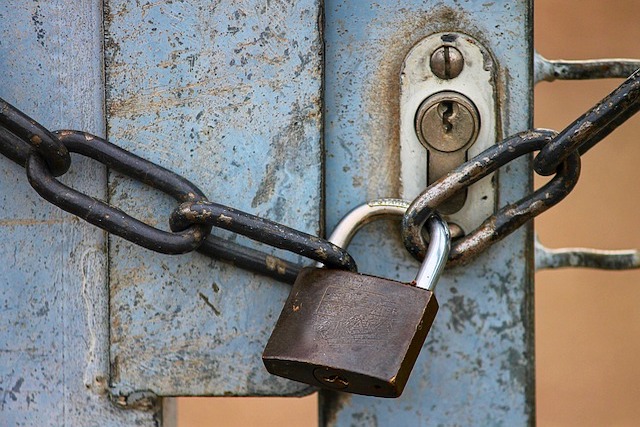Removing squatters is unfortunately something that most UK property landlords or owners will have to face at some point in time. The eviction process can sometimes be extremely difficult, so it is essential that you remain fully aware of your rights at all times.
The process of removing squatters in the UK was for a long time considered to be a bit of a minefield. This is because the weight of the law often seemed to be balanced in favour of the trespasser rather than the property owner.
Nowadays, this is not so true – especially in the case of residential properties. It is now illegal to trespass on residential sites, meaning landlords can request police intervention to remove squatters. That being said, the police may wait until the owner has completed several steps before getting involved.
So what is the process of removing squatters in the UK and how do you navigate your way through the steps without breaking the law yourself?
What is a Squatter?

Before we outline how to remove squatters from your property, we will first discuss what constitutes being a squatter. By definition, the term squatting is used to define a person or group of people who take possession of unoccupied land or an empty property that does not belong to them.
A squatter will usually gain access to a property during vacant periods, however it is also possible that they were initially given access to the premises by a tenant. For example, the tenant may have invited a third party to stay for a long period of time, who then refuses to leave once the tenant moves out.
If the tenant themselves does not leave your property once your lease has ended, they are not classed as a squatter since you had a prior agreement with them. This also applies if they fall behind on rent payments.
Preventative Measures

Since the process for removing squatters in the UK can be quite complicated, it is a good idea to do everything you can to prevent trespassers from taking control of your property. If you know that the premises is going to be vacant for a while, be sure to invest in additional security measures.
Should you already have tenants in the property, try to carry out regular inspections to make sure that there are no long-term guests staying there that could turn into squatters further down the line. When it is time for your tenants to leave, ensure that all of the keys you gave out are returned, all personal belongings have been removed and there are no signs of anybody intending to stay behind.
The Process for Removing Squatters in the UK

There are two main options for removing squatters in the UK, which are:
- Interim Possession Orders (IPOs): to only evict the squatters
- Claims for Possession: to remove the squatters and make a claim for damages
Whichever path you choose, it is important to seek specialist advice from the start. This is due to the fact that the processes involved must be followed to the letter for the Court to take action on your claim.
You should also ensure that you never take action to remove the squatters yourself, whether it be by threat or force. Doing so will be seen as a crime and you may end up facing action yourself.
Using an Interim Possession Order
You are able to apply for an IPO as long as the squatters have not been in your property for more than 28 days. To get started, you will need to fill out an application form and send it to your local County Court.
Once this has been done, the Court will provide you with the documentation you need to serve to the squatters after a few days. You will then be given 48 hours to provide these papers to the trespassers.
When the IPO has been served, the squatters will be given 24 hours to vacate the premises and they must not return within 12 months. Failure to comply with this is likely to see the trespassers handed a custodial sentence.
Remember that an IPO can only be used to force the squatters to leave. If any damage has been caused, you must request a Claim for Possession if you want to be reimbursed.
How to use a Claim for Possession
If you are wanting to remove squatters and claim damages, or if more than 28 days has passed since your property was taken over, you will need to file a claim for possession. This is also the course of action you should take if your tenant is in rent arrears. The process you need to follow is extremely precise, so it is important to seek specialist advice to ensure everything is done correctly.
You will first of all need to make a claim under Section 8 of the Housing Act 1988. You will also be expected to present evidence of grounds 2, 8, 10-15 and/or 17 as listed in Section 2 of the Act.
These specific grounds cover issues such as rent arrears, anti-social behaviour, property deterioration due to negligence and ill-treatment of furniture. If you are wanting to claim for damages, you will typically have to satisfy grounds 13, 14 or 15 – as these cover the condition of the property.
You will also need to give notice that you intend to take back possession of your property. To do this, you will need to fill out Form 3 of the Government’s Assured Tenancy Forms. The amount of notice you have to provide depends on what grounds you are seeking to take over the property, and can vary between two weeks to two months.
The Court will then issue an order that stipulates a date by which the squatters must vacate the premises. If they refuse, the next step will be to apply for a warrant of possession, which involves the use of bailiffs to remove the trespassers.
Start with the Right Advice

Because the process for removing squatters in the UK can be extremely complex, it is essential that you seek specialist advice as soon as possible. This is where Shams Williams can help.
Our experienced team of solicitors is available to guide you from start to finish, providing essential guidance wherever necessary. We are dedicated to providing a results-driven service that satisfies your every need. If you would like more information, or to speak to the team, get in touch today.






